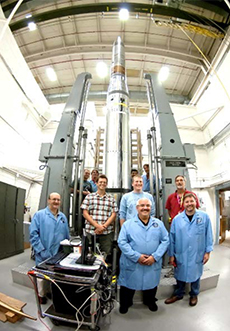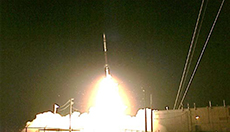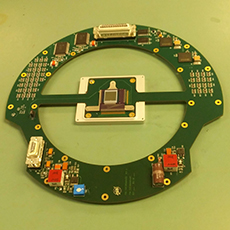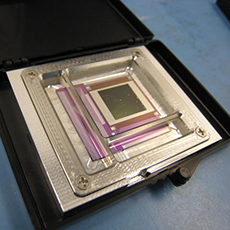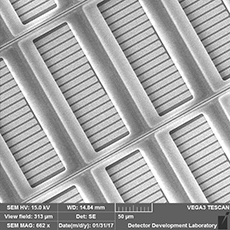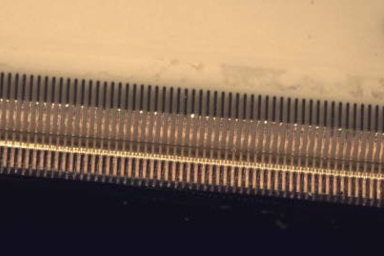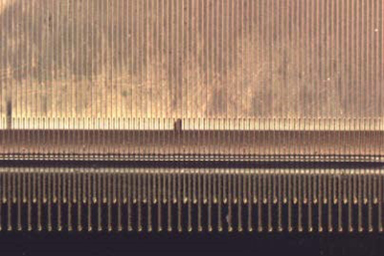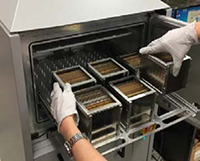Collaborations
1. NGMSA Applications for Sounding Rocket Programs
Collaborators – Bloomberg Center for Physics & Astronomy, Johns Hopkins University

Prof. Stephan R. McCandliss - director, Center for Astrophysical Sciences, and the Prof. McCandliss' team at JHU.
Collaboration between JHU and NASA GSFC has been carried on in over a decade. Microshutter array assemblies have been developed and assembled with telescopes, including:
Big D assemblies for FORTIS (magnetically actuated MSAs), launched in 2013 and 2015.
Big θ assemblies for NG-FORTIS (electrostatically actuated NGMSA), launched in 2019.
2. NGMSA 3-D Printing Development
Collaborators – OPTOMEC Inc.

Dr. Michael Renn, CTO and Director of Advanced Applications Lab
Mr. Mike Dean, the Marketing Director
OPTOMEC team and NGMSA Team are developing 3D-Printing interconnects for NGMSA assemblies using aerosol jet printing technology.
Collaborators – nScrypt, Inc.
Coming soon.
3. NGMSA Antistiction Coating
Collaborators – Integrated Surface Technologies (IST)

Dr. Jeff Chinn, Chief Technical Officer
Collaboration between IST and NASA GSFC is focused on antistiction coating on NGMSA to prevent shutter blade stiction to light shields or back walls. The chemistry of monolayer molecular oxide is studied, the coating processes, and post-coating inspection techniques have been developed.
4. NGMSA Antireflection Coating with Nano Metamaterials Collaborator – Applied Physics Lab, Johns Hopkins University
Coming soon.


